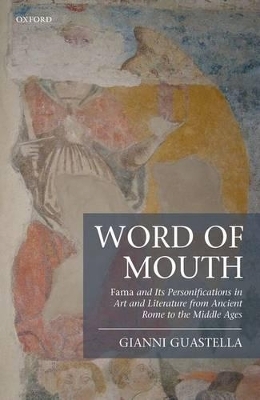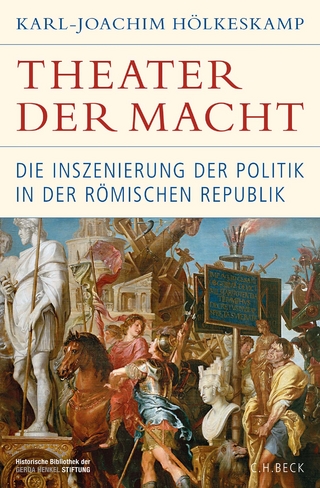
Word of Mouth
Oxford University Press (Verlag)
978-0-19-872429-2 (ISBN)
The concept expressed by the Roman term fama, although strictly linked to the activity of speaking, recalls a more complex form of collective communication that puts diverse information and opinions into circulation by 'word of mouth', covering the spreading of rumours, expression of common anxieties, and sharing of opinions about peers, contemporaries, or long-dead personages within both small and large communities of people. This 'hearsay' method of information propagation, of chain-like transmission across a complex network of transfers of uncertain order and origin, often rapid and elusive, has been described by some ancient writers as like the flight of a winged word, provoking interesting contrasts with more recent theories that anthropologists and sociologists have produced about the same phenomenon.
This volume proceeds from a brief discussion of the ancient concept to a detailed examination of the way in which fama has been personified in ancient and medieval literature and in European figurative art between the end of the fourteenth and the beginning of the sixteenth centuries. Commenting on examples ranging from Virgil's Fama in Book 4 of the Aeneid to Chaucer's House of Fame, it addresses areas of anthropological, sociological, literary, and historical-artistic interest, charting the evolving depiction of fama from a truly interdisciplinary perspective. Following this theme, it is revealed that although the most important personifications were originally created to represent the invisible but pervasive diffusion of talk which circulates information about others, these then began to give way to embodiments of the abstract idea of the glory of illustrious men. By the end of the medieval period, these two different representations, of rumour and glory, were variously combined to create the modern icon of Fame with which we are more familiar today.
Gianni Guastella is Professor of Latin Language and Literature at the University of Siena. His research interests focus mainly on Roman theatre and its reception in the culture of the medieval and Renaissance periods. He has published widely on topics ranging from the theatre of Plautus, Archaic Latin metre, and the reception of Apuleius, to family relationships in the Roman world, including authored monographs on Terence's comedies and Seneca's tragedies, an edited volume on the rediscovery of classical theatre in the Modern period, and commentaries on two of Suetonius' Lives of the Caesars.
List of Illustrations
List of Abbreviations
0: Introduction
0.1 Hendrik Goltzius, Fame and Virtue (1586)
0.2 Prosopon/persona
0.3 Forms of Fama
1: Flying Information
1.1 Movement in Space
1.2 Winged bodies, divine messengers
1.3 Epea pteroenta: the flight of the word
1.4 'Ce télégraphe est un mystère social'
1.5 An uncertain point of departure, no destination
1.6 Mysterious testimonies
2: Lat. Fama
2.1 Fama a fando dicta
3: True and False
3.1 In court
3.2 A rumoribus, contra rumores
3.3 Fama, nomen incerti
4: Producers and Performers of Rumour
4.1 Modern theories on rumour and gossip
4.2 The multimedia transmission of information
4.3 The instability of rumours
4.4 Fama and rumor
5: Authority
5.1 Auctor
5.2 Believing someone s words
5.3 A curious messenger
6: Giving Rumour a Body
6.1 Homer, Hesiod
6.2 The cult of Pheme
6.3 Fama embodied
6.4 Fama disembodied
7: Beyond Death
7.1 Fama and gloria: Cicero, Boethius, Augustine
7.2 'Vana Gloria', 'Gloria Mondana'
7.3 'Passan vostri trionfi e vostre pompe': Petrarch and glory
8: Giving Glory a Body
8.1 Figures without iconographic models: Glory and Vainglory
8.2 The first images of modern Fama : the Glory of illustrious men
8.3 The image of Worldly Glory
8.4 From the Triumph of Gloria del popol mondano to the Triumphus Fame
8.5 A composite triumphal scenario
9: Contaminations
9.1 Figurative contaminations
9.2 Integrating Rumour and Glory
10: Chaucer, House of Fame
10.1 A pagan majesty
10.2 Fame and Fortune: a capricious judgment
10.3 Where tidings are born
10.4 A playful fictional universe
11: Conclusion
Bibliographical References
Index
| Erscheinungsdatum | 21.01.2017 |
|---|---|
| Zusatzinfo | 46 black-and-white illustrations |
| Verlagsort | Oxford |
| Sprache | englisch |
| Maße | 162 x 241 mm |
| Gewicht | 824 g |
| Themenwelt | Kunst / Musik / Theater ► Kunstgeschichte / Kunststile |
| Geschichte ► Allgemeine Geschichte ► Altertum / Antike | |
| Geschichte ► Allgemeine Geschichte ► Mittelalter | |
| Geisteswissenschaften ► Sprach- / Literaturwissenschaft ► Anglistik / Amerikanistik | |
| Geisteswissenschaften ► Sprach- / Literaturwissenschaft ► Literaturwissenschaft | |
| ISBN-10 | 0-19-872429-2 / 0198724292 |
| ISBN-13 | 978-0-19-872429-2 / 9780198724292 |
| Zustand | Neuware |
| Haben Sie eine Frage zum Produkt? |
aus dem Bereich


